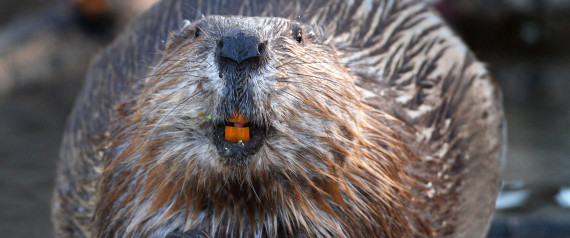This is a pretty exciting study. Especially for us here in beaver-forlorn Martinez. There are a lot of things it doesn’t do, like emphasize the ecological cost of removing beavers from creeks. But the part that I know will interest Worth A Dam is the fact that when she went back and analyzed this historical data, beavers favored maintaining their ponds in pretty much the same dam area.
U.P. study shows long-term impact of beaver ‘engineering’
Many of its engineering feats are still evident on the landscape after more than 150 years — longer than such other engineering marvels as the Eiffel Tower, the Mackinac Bridge, the Trans-Siberian Railroad and Toronto’s CN Tower have stood.
 The proof is visible in the continued existence of dozens of Ishpeming-area beaver ponds first mapped in 1868, according to newly published research.
The proof is visible in the continued existence of dozens of Ishpeming-area beaver ponds first mapped in 1868, according to newly published research.
“This study shows remarkable consistency in beaver pond placement over the last 150 years, despite some land use changes that altered beaver habitats,” ecologist Carol Johnston wrote in the study. “This constancy is evidence of the beaver’s resilience and a reminder that beaver works have been altering the North American landscape for centuries.”
An d in an interview, Johnston said a major lesson from the study is that beavers come back to the same spots on the landscape and reuse them time and time again. That means wildlife managers and public lands managers can expect beavers to return.
d in an interview, Johnston said a major lesson from the study is that beavers come back to the same spots on the landscape and reuse them time and time again. That means wildlife managers and public lands managers can expect beavers to return.
There are SO many things I love about this article but that last sentence is the money shot. If new beavers are drawn to ideal landscapes then getting rid of them every time isn’t the answer. Installing a working flow device will prevent family A from flooding your road. And family B, C, and D. Why don’t people realize that beavers chose those spots for a reason and, just like the thickly accented ex-govinator, “They’ll be BACK.”
Dr. Johnston misses a few details along the way, like here where she contradicts Michael Pollock’s earlier work and ignores his most recent work. For some reason, the region is CONVINCED that Western findings  don’t apply to their unique special dams (or trout), so I’m not surprised she said this. Hmmm, maybe we could trap her and Pollock in a jar, shake it up and make them fight it out?
don’t apply to their unique special dams (or trout), so I’m not surprised she said this. Hmmm, maybe we could trap her and Pollock in a jar, shake it up and make them fight it out?
I know I’d watch.
Obviously the most important thing about this study is that it suggests that if beavers come back to the same area time and time again, this probably wasn’t the first time that beavers moved into Alhambra Creek. And it won’t be the last. In fact the odds are their dam was in nearly the same place! I can’t tell you how happy that makes me!
 Now another word on the previously mentioned beaver genome project. This time from our friend Vanessa Petro in Oregon. She’s the assistant to Dr. Jimmy Taylor at USDA working on the project. She writes:
Now another word on the previously mentioned beaver genome project. This time from our friend Vanessa Petro in Oregon. She’s the assistant to Dr. Jimmy Taylor at USDA working on the project. She writes:
“Here’s why folks should “give a dam’” about this project:
1. This is the first to ever sequence the beaver genome!
2. It would greatly contribute to our existing knowledge of this species and aid in their future management worldwide!
3. We may gain insight into the beaver’s complex dam-building behavior.
4. Researchers would be able to examine the small scale genetic differences between individuals across various spatial and temporal scales.
5. We can make scientific history together!
Please support and help us spread the word about this campaign! If you’re looking for a chuckle, check out our recent campaign video (located on our website link) taken at a local dam site with our beaver expert and some very special guests.
Thanks for your support!
Folkmanis to the rescue! Support Vanessa and her adorable beaver helpers by going here and donating to this important work. They have 70 donors so far and need about 200 more. So pass it on, because beavers lives matter.
Vanessa Petro
Faculty Research Assistant
Dept. of Forest Ecosystems and Society
Oregon State University
321 Richardson Hall
Corvallis, OR 97331
And give it up for our delicate city workers who removed all the silt in the creek that was easy to reach. You can see from Lory’s photo here how much they left under the bridges where it was harder to use their toys. I’m sure that’s fine, because its not like our creek constricts around bridge areas during flooding anyway. Right?
 Yet another reason to be happy about Dr. Johnson’s historic research. It means our city will only need to coexist with beavers another 142 years! They’ll be so relieved.
Yet another reason to be happy about Dr. Johnson’s historic research. It means our city will only need to coexist with beavers another 142 years! They’ll be so relieved.













































